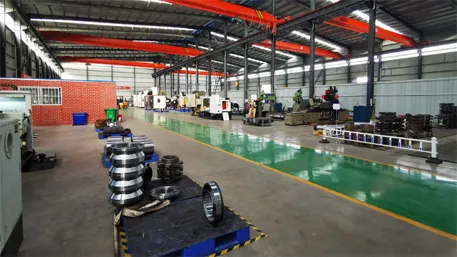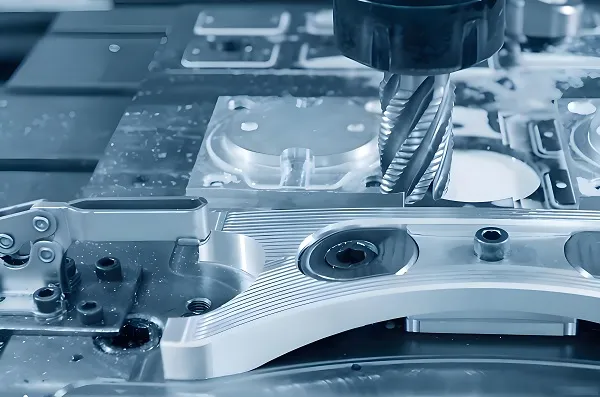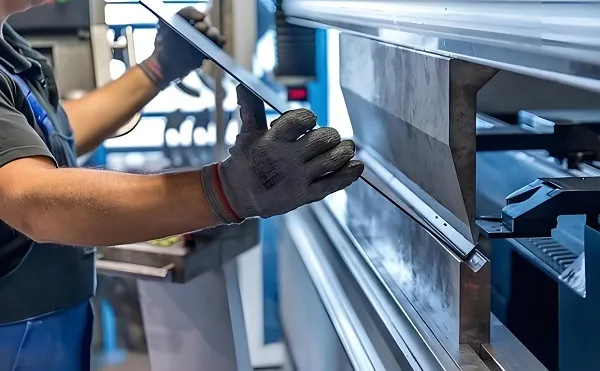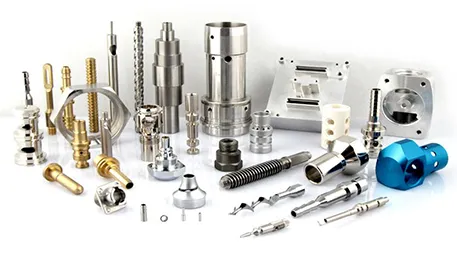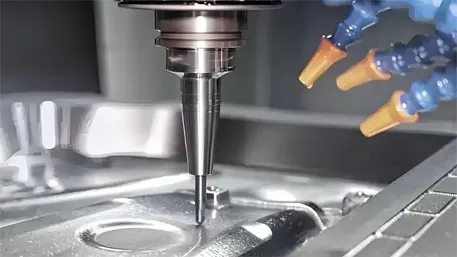In the intricate world of precision manufacturing, CNC machining centers stand as technological marvels, capable of producing highly accurate and complex components with remarkable efficiency. When exploring the fundamental building blocks of these advanced machines, the question “Which four components are on every CNC machining center?” emerges as a crucial inquiry. These essential components form the backbone of a CNC machining center, enabling it to execute a wide range of machining operations with precision and reliability. This article will delve into four key components, along with two additional integral parts, to provide a comprehensive technical understanding of what makes a CNC machining center function.

1. Control System: The Brain of the Operation
At the heart of every CNC machining center lies the control system, often referred to as the CNC controller. This component acts as the “brain” of the machine, interpreting programmed instructions and coordinating all machining operations. Modern CNC controllers typically utilize advanced computer hardware and software, with G-code being the most common programming language.
The control system receives the digital design data from Computer-Aided Design (CAD) and Computer-Aided Manufacturing (CAM) software, which is then converted into precise motion commands for the machine’s axes. High-end controllers are equipped with multi-axis control capabilities, allowing for complex 3D machining. They also feature real-time monitoring and feedback mechanisms. Sensors integrated with the control system constantly track the position and performance of the machine’s components, such as servo motors and linear guides. If any deviations from the programmed path occur, the control system can instantly adjust the machine’s movements to maintain accuracy, ensuring that the final components meet strict tolerance requirements.
2. Spindle System: The Powerhouse of Cutting
The spindle system is a critical component responsible for rotating the cutting tools at high speeds, enabling the removal of material from the workpiece. It consists of the spindle motor, spindle bearings, and the tool holder interface. The spindle motor is designed to deliver high torque across a wide range of speeds, which can vary from a few hundred to over 40,000 revolutions per minute (RPM) depending on the machining center’s application.
Advanced spindle systems often incorporate features like variable frequency drives (VFDs) to precisely control the motor speed, ensuring optimal cutting performance for different materials and operations. High-precision spindle bearings play a vital role in reducing vibration and maintaining the spindle’s accuracy during high-speed rotation. Technologies such as ceramic hybrid bearings are increasingly used due to their low friction, high stiffness, and excellent heat resistance. The tool holder interface, such as the BT, HSK, or Capto systems, securely holds the cutting tools in place, providing high concentricity and repeatability for consistent machining quality.
3. Feed System: Precision in Movement
The feed system of a CNC machining center is responsible for the linear and rotary movement of the workpiece and cutting tools along the machine’s axes. It comprises servo motors, ball screws, linear guides, and couplings. Servo motors are the driving force behind the feed system, converting electrical signals from the control system into precise mechanical movements. These motors are highly responsive, capable of accelerating and decelerating rapidly to achieve the required feed rates and positioning accuracy.
Ball screws are used to translate the rotational motion of the servo motors into linear motion. They feature a recirculating ball mechanism that reduces friction and backlash, enabling smooth and accurate movement of the machine’s axes. Linear guides provide the structural support and guidance for the moving components, ensuring straight and stable motion. High-quality linear guides, such as those with pre-loaded 滑块,can significantly enhance the rigidity and positioning accuracy of the machining center. Couplings connect the servo motors to the ball screws, transmitting torque while compensating for any misalignments between the two components.
4. Tool Changer and Tool Magazine: Versatility in Machining
The tool changer and tool magazine are essential components that enable a CNC machining center to perform multiple machining operations without manual tool changes. The tool magazine, also known as the tool rack, stores a variety of cutting tools, ranging from end mills and drills to reamers and taps. Depending on the machining center’s design, the tool magazine can hold anywhere from a few tools to over 100, providing versatility for complex machining tasks.
The tool changer mechanism is responsible for automatically retrieving the required tool from the magazine and installing it onto the spindle, as well as removing the used tool and returning it to the magazine. There are different types of tool changers, including arm-type, swing-arm, and carousel-style changers. Each type has its own advantages in terms of speed, reliability, and tool capacity. High-speed tool changers can complete a tool change in as little as a few seconds, minimizing non-cutting time and increasing the overall productivity of the machining center.
5. Safety Protection System: Ensuring Operational Security
In addition to the four primary components, a safety protection system is indispensable for every CNC machining center. This system is designed to safeguard operators, prevent damage to the machine, and ensure safe working conditions. It includes various safety features such as emergency stop buttons, safety interlocks, and protective enclosures. Emergency stop buttons are strategically placed around the machining center, allowing operators to immediately halt all machine operations in case of an emergency.
Safety interlocks are used to prevent the machine from starting or operating when access doors or protective covers are open, ensuring that operators cannot come into contact with moving parts. Protective enclosures, often made of transparent polycarbonate or metal, surround the machining area, shielding operators from flying debris and coolant spray. Some advanced safety systems also incorporate sensors that can detect abnormal conditions, such as overheating or excessive vibration, and automatically shut down the machine to prevent damage.
6. Cooling and Lubrication System: Maintaining Optimal Performance
The cooling and lubrication system plays a crucial role in maintaining the performance and longevity of a CNC machining center. During machining operations, heat is generated due to the friction between the cutting tool and the workpiece, which can cause tool wear, dimensional inaccuracies, and even damage to the machine. The cooling system, typically consisting of a coolant pump, nozzles, and a coolant tank, circulates coolant (such as water-soluble cutting fluids or synthetic coolants) to the cutting area. The coolant helps to dissipate heat, flush away chips, and reduce friction, thereby improving tool life and machining quality.
The lubrication system, on the other hand, ensures that all moving components, such as ball screws, linear guides, and spindle bearings, are properly lubricated. Automated lubrication systems use pumps and distribution blocks to deliver lubricant at regular intervals, preventing wear and reducing friction. Different types of lubricants, such as grease and oil, are used depending on the specific requirements of the components. Proper cooling and lubrication not only enhance the machine’s performance but also extend its service life, reducing maintenance costs and downtime.
In conclusion, a CNC machining center is a sophisticated piece of equipment composed of several essential components. The control system, spindle system, feed system, and tool changer with tool magazine form the core of the machine, enabling precise and efficient machining. Alongside these, the safety protection system and cooling and lubrication system are equally vital for ensuring safe operation and maintaining optimal performance. Understanding these components and their functions is key to harnessing the full potential of CNC machining centers in modern manufacturing. As technology continues to evolve, these components are likely to become even more advanced, further enhancing the capabilities of CNC machining in the future.

